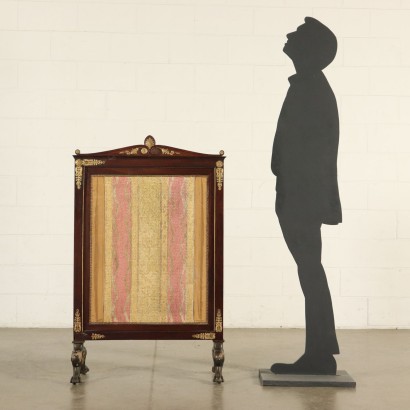Elegant Fireplace Screen Mahogany Italy 19th Century
Features
Style: Bourbon Restoration (1815-1830)
Age: 19th Century / 1801 - 1900
Origin: Lombardia, Italy
Main essence: Mahogany
Description
Elegant fireplace screen with lacquered ferine feet. Double sliding structure made of mahogany with small carved frames and gilded bronze applications. Refined ornaments made of chiseled gilded bronze embellish the item with rosette, anthems and elegant flower twines. Missing parts. Manufactured in Lombardy, Italy, second quarter of the 19th century.
Product Condition:
The item shows signs of wear due to age. Any damage or loss is displayed as completely as possible in the pictures. It may require restoration and recovery of french polish.
Dimensions (cm):
Height: 119
Width: 75
Depth: 33
Maximum size (cm):
Height: 194
Certificate issued by: Enrico Sala
Additional Information
Style: Bourbon Restoration (1815-1830)
Starting from the Congress of Vienna in 1815, the arts also expressed the return to the monarchical order and the desire for order after the war years.The stylistic features are an evolution of the Empire style, but with simpler lines and stripped of the typical symbols of the Napoleonic period.
There is greater attention to the practicality of furniture and domestic use.
Find out more with the insights of our blog and FineArt on the Restoration style:
The return to the past in the Restoration period < / A>
Gueridon Restaurazione



























